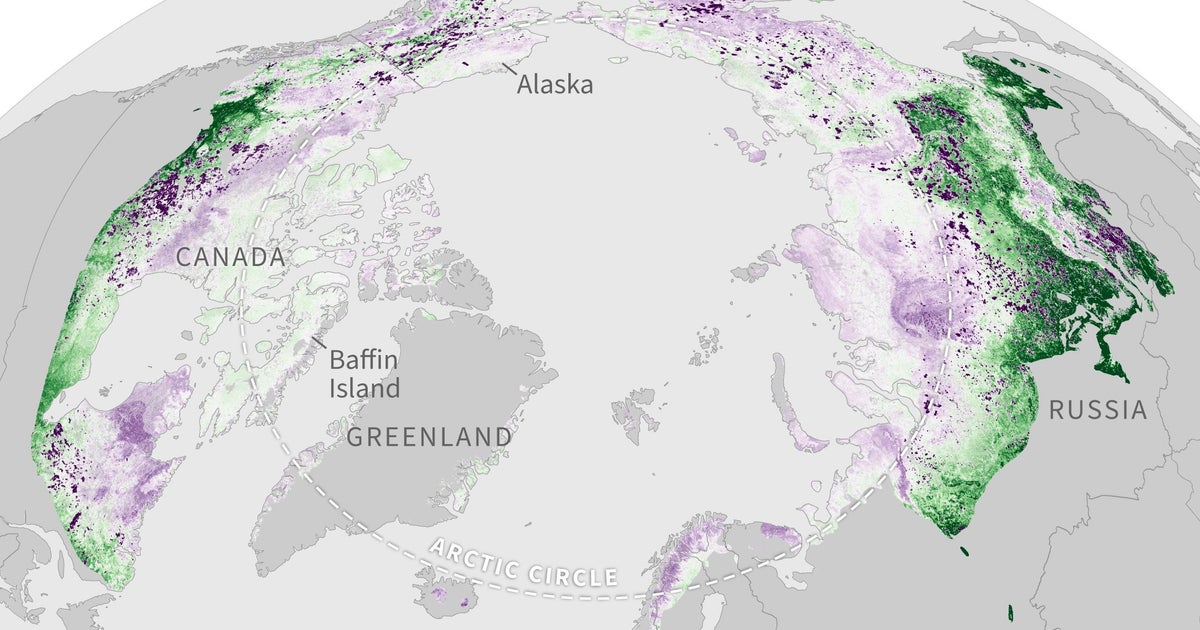Arctic and Antarctic might see radio blackouts that could last for days as "cannibal" CME erupts from sun
The ongoing solar storm has hit the planet's polar regions, potentially causing a days-long radio blackout, NOAA said on Tuesday. The impact has hit as a "cannibal" coronal mass ejection makes its way to Earth from the sun, experts say.
The potential radio blackouts are part of a Polar Cap Absorption, which is when high-frequency and very high-frequency radio waves in the ionosphere are absorbed, while low-frequency and very low-frequency radio waves are reflected at lower altitudes than usual. NOAA said the event has been in progress since Monday evening at roughly 9:15 p.m. ET.
The event was caused by a massive cloud of plasma coming off the sun, known as a coronal mass ejection (CME), as well as a strong M5 solar flare. Those two eruptions triggered a minor solar radiation storm that sent energetic protons to Earth.
"PCA events can prevent the ability to communicate via HF radio propagation around the polar regions and can last for hours to days," NOAA said Tuesday. "This event is likely to continue throughout 18 July and perhaps into 19 July."
The solar radiation storm is classified as an S1 on a scale that goes up to S5, meaning that it has no biological impacts and won't affect satellite operations, although it could cause radio blackouts at the poles.
NOAA's notice came shortly after the agency announced an M5.7 flare and CME had erupted from the same region of the sun and that a moderate solar radiation storm with the power to cause radio blackouts on the sunlit side of Earth had been observed by a satellite.
The agency said Sunday that solar flares were expected throughout the week, with a chance of X-class flares – the strongest ones described as "explosions on the surface of the sun" – on Monday and Tuesday. But there's also a "cannibal" CME on the way, experts say, as the sun, currently in the fourth year of its cycle, saw even more plasma bursts just days ago.
On Friday, the sun saw a small solar flare as well as a "dark eruption" on the sun's surface, which SpaceWeather.com described as a "spray of dark plasma" that "flew away from the sun's southern hemisphere." A day later, a second, stronger flare erupted from the sun.
According to SpaceWeather.com, NOAA models show that the second flare was expected to essentially consume the first, forming what's known as a "cannibal CME." NOAA has said that the CMEs involved in this event are expected to arrive on Tuesday, making a low-level geomagnetic storm possible on top of the existing solar radiation storm.
Under a minor geomagnetic storm, the northern lights could be visible from Michigan and Maine, NOAA says, and there could be minor impacts on power grids and satellite operations.
Nottingham Trent University associate astronomy professor Daniel Brown told Newsweek that the strength of the CMEs is what determines how strong a geomagnetic storm the planet will ultimately see.
"The amount of matter ejected, its speed, the associated magnetic fields, as well as how they interact with other already emitted particles from the sun, all add up to a bumpy environment moving outwards from the sun for our Earth's magnetic field to travel through," Brown said. "The more prolonged, the stronger the interaction will be and the higher the likelihood of a strong geomagnetic storm."



